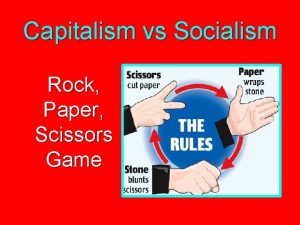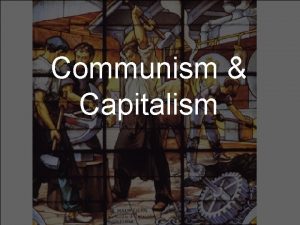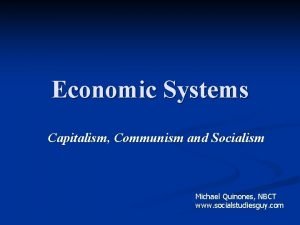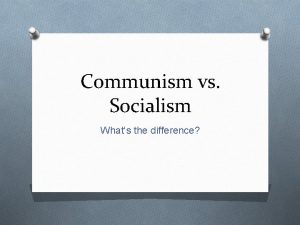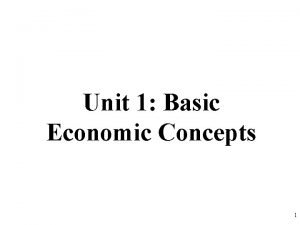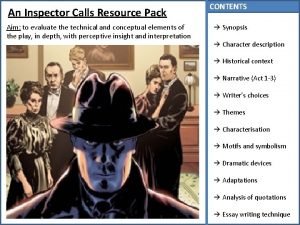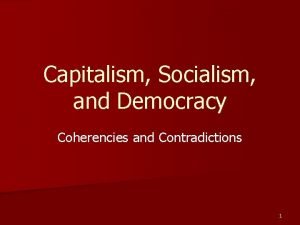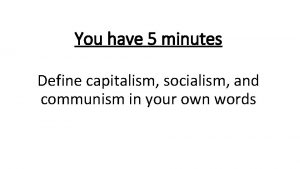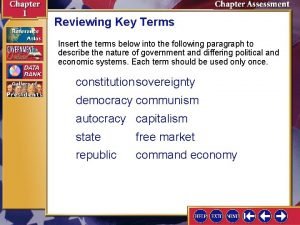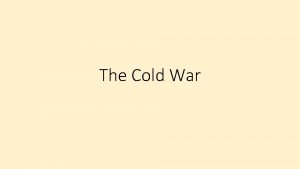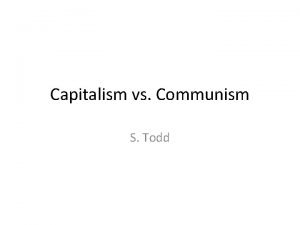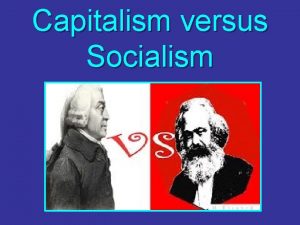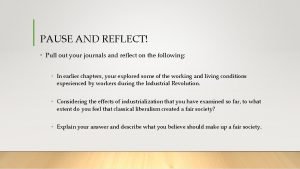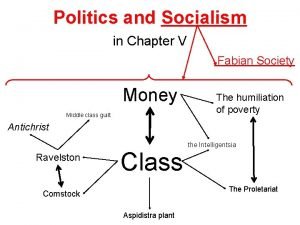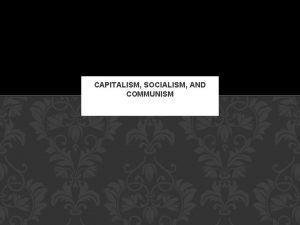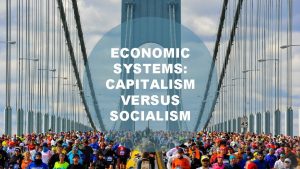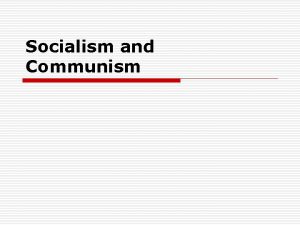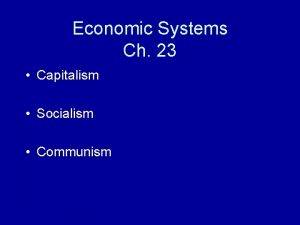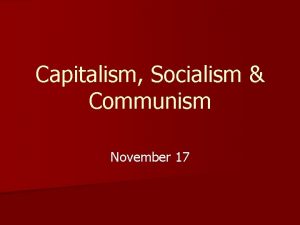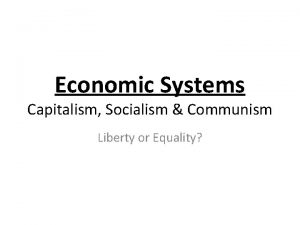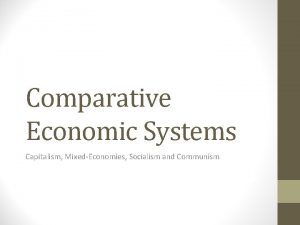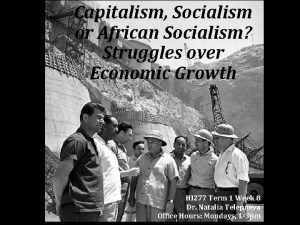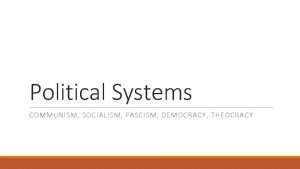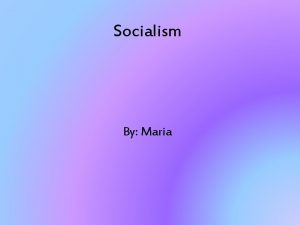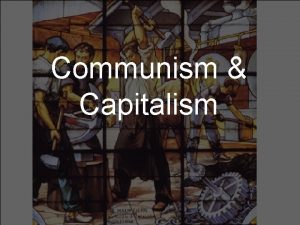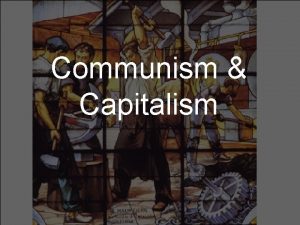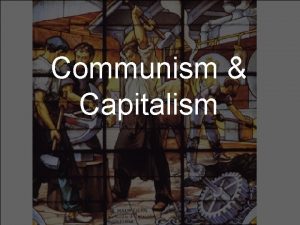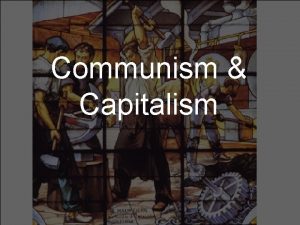Understanding Economic Systems Communism Socialism Capitalism Warm Up






















- Slides: 22

Understanding Economic Systems Communism, Socialism, Capitalism

Warm Up Question What standard of living do you hope to attain in life? How do you plan to accomplish this goal? Write it down! Let’s Discuss!

Main Idea Economies vary when it comes to government involvement. The relationship between government and the economy has been debated since America’s historical beginnings.

Essential Question t n e nm r e v o g a ? d l y u m o o h s n o e l c o e r n t a a h W n i y pla

I. Understanding Economic Systems A. Economics – the social science that analyzes the production, distribution, and consumption of goods and services. B. Many different economic systems in the world C. Helps formulate our understanding of Modern American History

Economies of the World - 2008 According to this map, which are amongst the world’s wealthiest nations?

II. Economic Systems Capitalism A. An economic system in which factories, equipment, or other means of production are privately owned rather than controlled by the government. B. Example – United State of America

Capitalism (continued) Laissez-Faire A. The idea that the free market, through supply and demand, will regulate itself if government does not interfere B. Government should be “hands off” with big business C. Highest form of capitalism D. Ex. Rise of Industry in America in 19 th Century John D. Rockefeller founder of Standard Oil had a net worth of $668 Billion

Capitalism (continued) Supply & Demand A. The way a market regulates itself in a capitalist society B. So how does this work? C. Let’s discuss!

Socialism A. A political and economic theory that advocates ownership of the means of production, such as factories and farms, by the people rather than by capitalists and land owners. B. Power belongs to the working class C. Ex – China, Yugoslavia (parts of U. S. S. R. ) The symbol of the Soviet Union featured the hammer and sickle symbols of laborers for centuries

Features of Swedish Socialism n. Combination of private ownership of industry and government funded welfare n. When a child is born, parents entitled to combined 450 days of parental leave with ¾ pay n. Several months of government paid sick and vacation leave each year n. If unemployed, workers receive 80% of their pay from government and sponsored retraining n. While government claims 5% unemployment, government bureaucracy and government sponsored employment raises true number to 10% n. Employers responsible for first four days of sickness, no documentation necessary

More Features Swedish Socialism n. Medical costs are mostly paid by government n. Cost of system – Swedish workers pay 55% of their income in taxes plus a value added tax (sales tax) of 25%, compared to max. of 28% for married couples in US earning < $ 200, 000 and 8. 25% sales tax in Orange County n. Results in loss of consumer spending and loss in productivity n. Swedish suicide rates are moderately high for men and very high for women n. In Oslo, Norway, neighboring country and similar economically, shortage of police officers, medical and school supplies. Significant drug addiction, and delivery of a pizza from Oslo’s most popular pizza joint runs from $ 34. 00 to $ 48. 00, including delivery charges and sales tax. Gas is $ 6. 00 per gallon (2005)

Communism A. An economic or political system in which the state or the community owns all property and the means of production, and all citizens share the wealth. This is called a “command economy” B. Creates a classless society (theoretically) C. Ex – North Korea, Cuba, U. S. S. R.

Capitalism (Market economy) Ownership and control Competition Standard of Living • Individuals control means of production • Market determines what goods will be sold at what price • Competition keeps prices low and quality high • high standard of living and economic security • Individuals free to earn profits, but may risk losses Socialism (mixed economy) • Basic means of production owned and managed by government • Private ownership, with regulation, of businesses Cooperation stressed over competition Communism (Command economy) Government owns means of production Government determines what goods will be sold at what price No competition, lower quality goods • high standard of living Goal is equality for and economic security everybody, enforced by • High taxes provide the government free health care and education

Economic Scenarios Analyze the following scenarios and then identify the type of economy that is being described in the statement. Circle the your answer on the back of your worksheet and we will discuss when finished.

Scenario #1 In this economy manufactures of automobiles control the number of vehicles produced each month in a effort to avoid surpluses that would minimize their profits.

Scenario #2 In this economy, the government produces it’s signature crab flavored soft drink and determines that it will be sold for $1. 25 in all stores.

Scenario #3 In this economy, investors can make millions investing in the construction of new homes, but it is just as likely that the value of these properties could decrease by 40% and they will lose millions of dollars.

Scenario #4 In this economy, unemployment is around 3% and although taxes are high, all members of the society have access to good schools and hospitals.

Scenario #5 In this economy, there are only 3 types of automobiles to choose from. They often break down and they are all painted a light brown color.

Scenario #6 In this economy, you are the owner of construction company, but all your materials to build houses is regulated by the government to ensure safe housing for all.

Scenario #7 In this economy, the value of goods fluctuates greatly and as a company you must continue to produce quality goods, or risk being out of business.
 Rock paper scissors communist game
Rock paper scissors communist game Capitalism communism socialism fascism
Capitalism communism socialism fascism Feudalism capitalism socialism
Feudalism capitalism socialism Socialism vs communism
Socialism vs communism Capitalism communism socialism fascism
Capitalism communism socialism fascism Cross cutting cleavages
Cross cutting cleavages Socialism v communism
Socialism v communism Site:slidetodoc.com
Site:slidetodoc.com Communist economy definition
Communist economy definition Communist vs socialist
Communist vs socialist Socialism vs communism
Socialism vs communism An inspector calls character
An inspector calls character Feudalism vs capitalism
Feudalism vs capitalism Communism and capitalism dbq answer key
Communism and capitalism dbq answer key Reviewing key terms
Reviewing key terms Was the cold war capitalism vs communism
Was the cold war capitalism vs communism Communism is better than capitalism pros and cons
Communism is better than capitalism pros and cons Capitalism versus communism
Capitalism versus communism Capitalist economic system
Capitalist economic system Economic systems lesson 2 our economic choices
Economic systems lesson 2 our economic choices Who are these
Who are these Examples of individualism
Examples of individualism Fabian socialism vs marxism
Fabian socialism vs marxism
